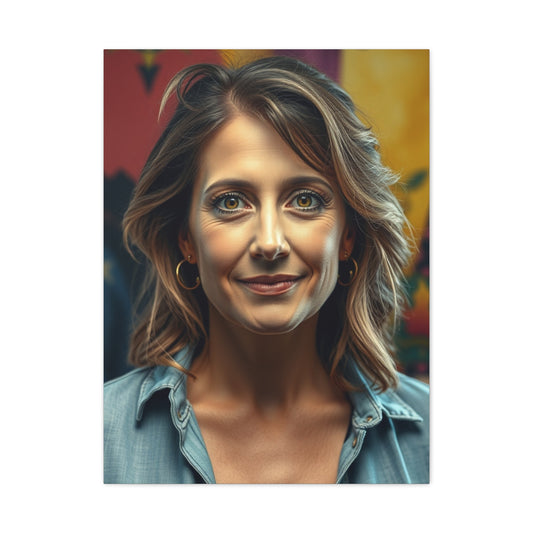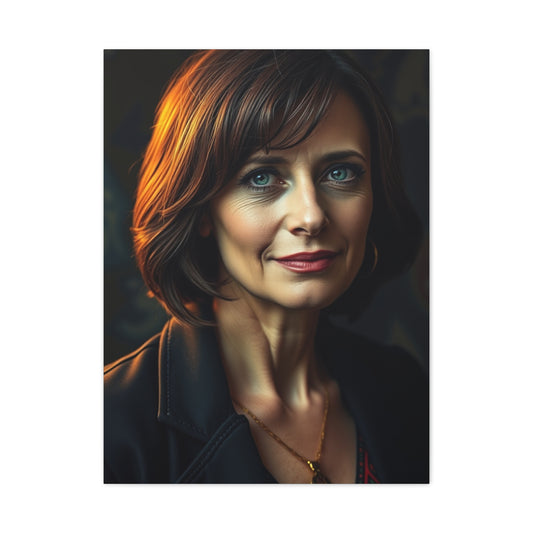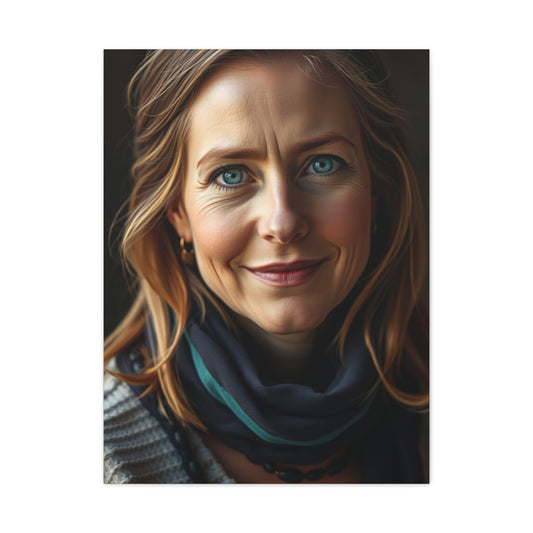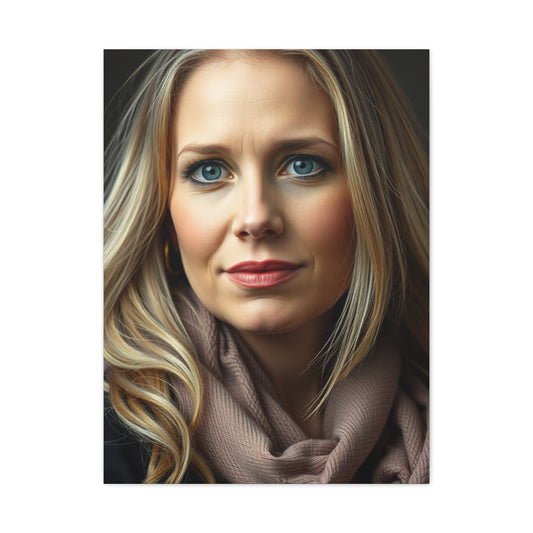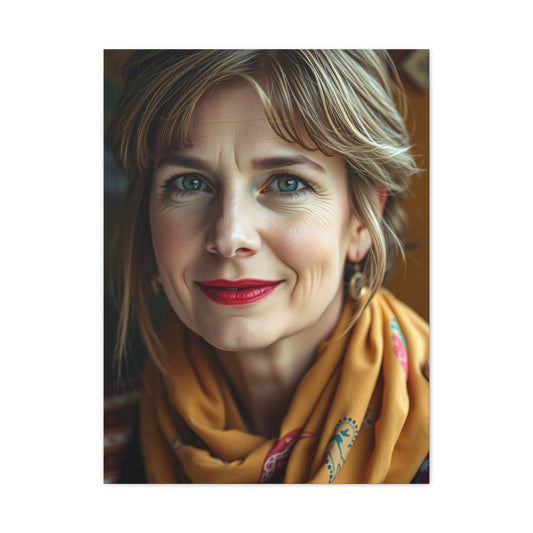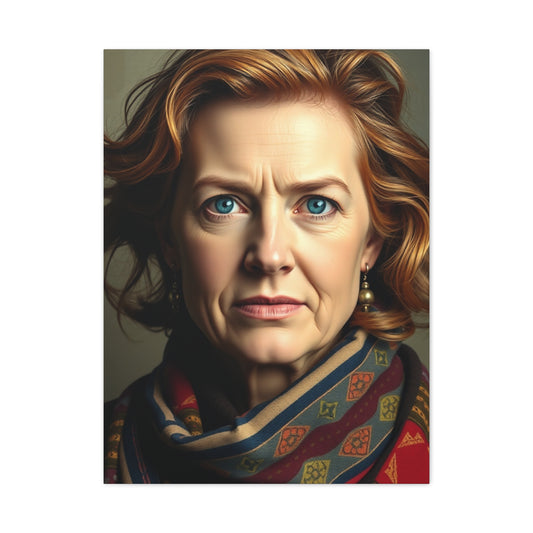Maggie Stephenson Wall Art: Curated Masterpieces for Modern Living
Art has always been more than paint on canvas; it is a mirror of experience, identity, and the intangible inner landscapes of its maker. Maggie Stephenson’s art radiates this truth with every curve, hue, and botanical flourish. Known for her lush compositions filled with monstera leaves, palms, celestial bodies, and women basking in serenity, Stephenson has emerged as a voice for wanderlust and inclusivity in contemporary illustration. Her work pulses with a celebratory energy, where women of diverse backgrounds thrive amid tropical motifs, all tied together by palettes that seem dipped in sunlight.
Her life’s path—born in Poland, raised in Germany, and later migrating to the United States—has shaped her artistic vision into one of openness and cultural fluidity. This sense of journey, of never fully belonging to a single place yet feeling connected to many, permeates her compositions. The result is a visual language both intimate and universal, conjuring paradisiacal dreamscapes that soothe while they empower.
In exploring Maggie Stephenson’s practice, one encounters a dialogue between travel and identity, feminism and inclusivity, plants and celestial symbolism, nostalgia and modernity. These intersections create the backbone of her work, making her not just an illustrator but a chronicler of emotional landscapes, a guide into tranquil yet powerful spaces.
This part of the study will delve into her artistic development and worldview, tracing historical background, examining conceptual foundations, classifying thematic categories, and highlighting the practical applications of her art in modern life.
Historical Background
The story of an artist cannot be separated from the story of her migration. For Stephenson, each country she has lived in has left an indelible mark on her imagination. Born in Poland, a land steeped in folk traditions, decorative patterns, and a history of resilience, her early surroundings were imbued with a sense of myth and survival. Childhood in Germany introduced her to another kind of visual culture—order, design precision, and exposure to Europe’s grand museums and artistic legacies. Yet, it was her relocation to the United States at the age of eighteen that sparked her search for a personal voice, untethered from rigid expectations and open to experimentation.
The displacement across borders fostered in her a sense of perpetual curiosity. She has often expressed that she never feels fully at home in one place, which manifests in her compositions as an ongoing exploration. This nomadic mindset, fueled by wanderlust, allows her to weave together imagery from Venice’s cobblestone streets, California’s glowing coastlines, and imagined tropical retreats where the sun lingers endlessly.
Her work aligns with a historical lineage of artists who turned personal displacement into creative energy. Like Marc Chagall, whose migration shaped his dreamlike worlds, or Friedensreich Hundertwasser, whose environmental and decorative visions rejected conformity, Stephenson uses art to reconcile movement with identity. Her pieces can be seen as modern heirlooms of diaspora—visual relics of one woman’s journey across continents, translated into universal motifs of warmth and belonging.
Core Concepts and Foundations
At the foundation of Maggie Stephenson’s art lies a commitment to inclusivity, simplicity, and emotional resonance. Several core concepts define her practice:
Celebration of Women
Her paintings often feature women as central figures—not as background muses but as protagonists embodying strength, ease, and joy. These women are diverse in skin tones, shapes, and attitudes, challenging narrow societal standards. Through them, she envisions a world where femininity is not confined but liberated.
The Language of Wanderlust
Travel, for Stephenson, is not merely geographic but also psychological. Italy’s warm light, Venice’s timeworn bridges, or California’s tropical flora may inspire specific works, yet the deeper essence lies in recreating the state of mind travel evokes: freedom, wonder, and presence in the moment.
Botanical Vitality
Plants—monstera, palms, and sprawling greenery—are indispensable in her imagery. They serve both aesthetic and symbolic functions, representing growth, adaptability, and the flourishing of life even in challenging environments. They bring vitality to otherwise still compositions, whispering of resilience and abundance.
Celestial Symmetry
Recurring suns, moons, and stars suggest a metaphysical layer. These celestial elements hold an eternal presence—graceful, balanced, and mysterious—inviting viewers to consider the deeper rhythms connecting human existence with cosmic order.
Inclusivity and Unity
At its heart, Stephenson’s work is political in its softness. Her embrace of inclusivity—depicting women of varied backgrounds and championing equality—serves as an artistic manifesto. In an era of division, her art insists on unity and acceptance without needing sharp edges or militant tones.
Types and Categories
Stephenson’s body of work can be understood through several thematic and stylistic categories that recur across her oeuvre.
Botanical Bohemian Works
Pieces filled with tropical leaves, flowering arrangements, and free-spirited interiors fall into this category. These works exude a bohemian aesthetic, blending natural motifs with relaxed human figures.
Celestial Narratives
A second category highlights her fascination with the cosmic realm—artworks centered on the sun, moon, or starry skies. These celestial elements infuse her pieces with transcendental qualities, hinting at mysteries beyond earthly confines.
Feminist Portraits of Unity
In these, women are foregrounded as powerful collectives or individuals. Their diversity speaks to inclusivity, with poses that embody contentment, relaxation, and inner radiance. These portraits blur the lines between portraiture and allegory, as each figure becomes both an individual and a symbol of shared womanhood.
Travel-Inspired Dreamscapes
Works inspired by places like Italy, Germany, or imagined paradises fall into this category. They capture not literal landmarks but rather emotional impressions of places—warm tones, textured landscapes, and atmospheres that transport viewers into a vacation-like reverie.
Motivational and Community-Oriented Illustrations
Beyond fine art pieces, Stephenson shares illustrated thoughts and captions on social media that encourage resilience, self-love, and perseverance. This body of work represents a community-driven branch of her practice, emphasizing connection over commodification.
Practical Applications
The significance of Maggie Stephenson’s art extends beyond aesthetic pleasure. Her works play an active role in how people shape their environments and identities.
Home Décor and Atmosphere
Collectors often hang her prints in interiors designed with greenery and natural light, creating a continuity between her paradisiacal visions and their lived spaces. Her art becomes a conduit for transforming homes into sanctuaries of serenity.
Feminist and Inclusive Representation
Her depictions of women of varied backgrounds serve as visual affirmations of inclusivity. For viewers who rarely see themselves reflected in mainstream art, her pieces offer representation, fostering confidence and belonging.
Therapeutic and Emotional Resonance
The tranquil compositions, tropical plants, and celestial bodies generate calming effects. Many who encounter her art describe it as a visual retreat, a therapy against the stresses of modern living.
Cultural and Artistic Education
Her works serve as entry points for conversations about cultural diversity, feminism, and the role of travel in shaping creative identity. Teachers, writers, and curators use her art as an example of contemporary illustration intersecting with social commentary.
Community Building
Through Instagram and other platforms, Stephenson nurtures an online community of encouragement. Her combination of visual art and uplifting words becomes a digital gathering space, where people share struggles and hopes, feeling less isolated.
Techniques and Methods
Every artist’s work bears the trace of not only imagination but also method. Maggie Stephenson’s art is distinctive not simply because of the subjects she chooses but because of the techniques she employs to render her paradisiacal worlds.
At the heart of her process lies a synthesis of digital and traditional practices. She began painting with brushes and pigments, but over time, illustration software allowed her to refine her vision with greater fluidity. Layers, digital palettes, and the flexibility to experiment without permanence opened new possibilities. Her signature color schemes—terracotta, sun-bleached peach, lush emerald, and soft neutrals—are painstakingly chosen to evoke warmth and serenity. Rather than following conventional color theory rigidly, she embraces intuitive pairing, allowing tones to flow naturally like conversations between hues.
Composition plays a central role in her technique. Figures are often arranged in reclining or contemplative poses, integrated seamlessly with leaves, flowers, or celestial orbs. This merging of human form with natural motifs suggests a unity of existence, dissolving boundaries between person and environment. The balance is carefully orchestrated, yet the outcome feels effortless.
Her linework further defines her style. She avoids rigid precision, instead favoring organic curves and simplified outlines. This approach echoes traditions of modernist masters such as Matisse, who valued fluidity and emotional resonance over exact realism. By distilling forms into their most essential shapes, she captures not what the eye literally sees but what the heart remembers.
Another subtle method is her interplay of texture. Even in digital works, she introduces grainy finishes, subtle gradients, and painterly strokes to avoid sterility. This ensures her pieces never feel cold or mechanical but retain a tactile, almost handmade quality.
Finally, symbolism infuses her methods. The recurring use of celestial motifs—suns, moons, and stars—provides a spiritual anchor. Plants, particularly tropical species, are employed not just for decoration but as emblems of vitality, renewal, and resilience. Through these choices, her methods create layered narratives where beauty intertwines with meaning.
Challenges and Common Mistakes
Behind the luminous calm of Maggie Stephenson’s works lies a history of personal and creative struggle. She has spoken openly about periods of deep self-doubt, when insecurity clouded her path and the fear of inadequacy loomed large. For years, she questioned whether she had any talent at all, searching desperately for one pursuit she could claim as her own. It was in the middle of this uncertainty that art became her refuge.
One of the major challenges she continues to face is the pursuit of originality in an era saturated with imagery. With millions of artists sharing work daily across digital platforms, the risk of repetition or being overlooked is immense. Her solution lies in authenticity—remaining true to her personal story and aesthetic, rather than chasing fleeting trends.
Another common difficulty is achieving balance between inclusivity and representation without reducing diversity to tokenism. Stephenson’s commitment to painting women of all skin tones and body types is rooted in sincerity, but she acknowledges that navigating representation responsibly requires constant mindfulness.
Technical challenges also surface, particularly with plants. While monstera leaves and palms flourish in her canvases, she admits that real-life gardening has often ended in frustration. This humorous contrast between her artistic greenery and her less-than-thriving houseplants highlights a universal truth: artists may master representations of life without mastering its practical upkeep.
Common mistakes that aspiring illustrators make—many of which she herself encountered early on—include overworking a composition, relying too heavily on trends, or fearing imperfection. Stephenson encourages acceptance of flaws and imperfections as integral to the creative process. A painting that feels too polished may lose soul, while one with visible traces of the artist’s hand retains vitality.
Another misstep she warns against is neglecting the emotional core of art. Technique alone cannot sustain connection; viewers resonate most with sincerity, vulnerability, and narrative. Her career serves as proof that imperfection can evolve into a signature style when guided by authenticity.
Trends and Future Outlook
Art never exists in isolation; it evolves in dialogue with society, technology, and cultural shifts. Maggie Stephenson’s work, with its emphasis on inclusivity, wanderlust, and botanical motifs, aligns with several broader trends while also pointing toward future possibilities.
The rise of digital illustration has democratized access to art, enabling creators like Stephenson to reach global audiences without reliance on traditional galleries. Platforms such as Instagram have become virtual museums, where her paintings not only circulate but also create communities. This trend shows no sign of slowing, with digital tools becoming more sophisticated and interactive.
Another current movement is the embrace of botanical and biophilic design, where natural elements are integrated into interiors. Stephenson’s art resonates strongly here, as her plant-filled compositions echo society’s craving for greenery and connection to nature in increasingly urbanized environments. Her pieces often find homes in plant-rich interiors, completing a dialogue between art and life.
Inclusivity and feminist narratives are also key directions for contemporary art. In an age of global conversations about equity, representation in art holds immense power. Stephenson’s refusal to adhere to narrow standards of beauty situates her as part of a new wave of artists redefining femininity and identity.
Looking forward, her art may continue expanding into interdisciplinary realms—textiles, murals, installations, or even virtual spaces. The paradisiacal quality of her illustrations could translate into immersive environments where viewers literally step into her tropical, celestial worlds. With the growth of augmented reality and digital exhibitions, future audiences may not just view her art but inhabit it.
Another emerging trajectory lies in sustainability. As ecological concerns shape creative industries, artists like Stephenson, who already foreground natural motifs, may take on more explicit ecological advocacy. Her plants and celestial bodies could evolve from symbols of serenity to urgent calls for environmental stewardship.
Ultimately, the future of her art seems anchored in its timeless qualities—warmth, inclusivity, tranquility—while simultaneously adapting to new mediums and societal conversations.
Expert Insights
The resonance of Maggie Stephenson’s work is not accidental; it is a convergence of personal story and cultural moment. Art critics, collectors, and fellow creatives recognize in her pieces a rare equilibrium: they are simultaneously accessible and profound.
Her influences reveal much about her vision. She cites Hundertwasser, Matisse, and Picasso—artists who defied rigidity, embraced color as emotion, and distilled forms into lyrical simplicity. From them, she inherits a trust in abstraction and playfulness. Yet she also draws inspiration from poets like Leonard Cohen, whose melancholic beauty deepens her sense of atmosphere, and musicians like Queen, whose grand theatricality translates into bold visual compositions. This eclectic mix reflects her multidisciplinary outlook, where art is not confined to one medium but flows across music, words, and images.
Experts often highlight her commitment to inclusivity as one of her most significant contributions. In an art world still grappling with representation, Stephenson’s portrayals of diverse women offer both aesthetic pleasure and cultural affirmation. Critics note how her works avoid didacticism; instead of instructing viewers, they invite them into a world where equality feels natural and effortless.
Collectors emphasize the emotional effect of her art in domestic spaces. Many describe her pieces as transformative, creating sanctuaries of calm within chaotic lives. Interior designers, too, frequently recommend her works for their ability to harmonize with greenery and natural light, amplifying a home’s serenity.
Fellow artists admire her openness in sharing struggles and insecurities. Rather than curating an image of perfection, she acknowledges her doubts, thereby inspiring others to persist despite uncertainty. This honesty, they argue, is as impactful as her visual style—it fosters a culture of encouragement within the creative community.
Her artistic journey illustrates a larger insight: great art does not emerge from confidence alone but from persistence through vulnerability. In Stephenson’s case, the moments of self-doubt became the soil in which her paradisiacal visions bloomed.
Emerging Trends in Wall Art
Art for the wall has undergone a fascinating transformation in recent decades. No longer confined to oil paintings framed in gilded borders, wall art now embraces an expansive range of media, ideas, and functions. What was once a passive decoration has become an active component of how people express identity, curate atmosphere, and narrate stories within their homes or public spaces. Emerging trends reveal how art has shifted to meet cultural currents, aesthetic desires, and technological advancements.
One of the most notable directions is the rise of minimalism in wall art. Clean lines, subdued palettes, and restrained compositions dominate spaces where less is more. Minimalist works emphasize emptiness as much as presence, creating breathing room on the wall and in the mind. This movement mirrors society’s craving for simplicity amidst overwhelming digital noise.
In contrast, maximalism has surged simultaneously. With bold colors, layered patterns, and intricate details, maximalist wall art creates an atmosphere of abundance. It thrives in spaces that reject restraint and instead celebrate individuality through eclectic visuals. The juxtaposition of minimalism and maximalism shows that contemporary wall art is not bound by a single philosophy but reflects diverse psychological needs.
Another powerful trend is sustainability. Artists increasingly work with recycled materials, natural dyes, and eco-conscious processes. Wall art becomes both aesthetic and ethical, communicating care for the environment. Pieces constructed from reclaimed wood, repurposed textiles, or biodegradable media exemplify how beauty can harmonize with ecological responsibility.
Digital art has also exploded as a trend, fueled by accessibility and technology. Digital prints, NFT artworks, and projection-based installations bring dynamic energy to walls. Unlike static paintings, digital wall art can evolve, shift, and even interact with viewers. This new frontier expands what we mean by art, inviting people to experience it as living, responsive, and immersive.
Cultural diversity plays a central role in emerging trends as well. Wall art now frequently borrows from global influences—Moroccan mosaics, Japanese minimalism, African textile patterns, Latin American color palettes—merging them into hybrid expressions. This global tapestry reflects the interconnectedness of our age, where inspiration flows across continents through shared imagery.
Another defining characteristic is personalization. Commissioned portraits, custom typography, and tailored wall pieces allow individuals to embed their own narratives directly into art. Personalized wall art transforms interiors from generic settings into intimate sanctuaries of memory and identity.
Finally, biophilic art—pieces inspired by or incorporating natural elements—has gained momentum. Botanical prints, preserved moss installations, and organic forms resonate with the human longing for nature within built environments. This mirrors a psychological truth: contact with representations of nature can reduce stress and enhance well-being.
Together, these emerging trends reveal a vibrant, pluralistic landscape. Wall art today is not one-directional but a constellation of approaches—from restrained minimalism to exuberant maximalism, from traditional materials to digital innovations, from cultural motifs to ecological activism.
Step-by-Step Guide to Choosing Wall Art
For those wishing to bring wall art into their environments, the process can feel overwhelming. Yet with clarity and intention, selecting the right piece becomes an enriching journey. Below is a guide to help navigate the choices.
Step 1: Define Atmosphere
Begin by reflecting on the atmosphere you want to cultivate in a space. Do you seek calm, vibrancy, sophistication, or playfulness? A serene retreat may call for soft botanical illustrations, while a lively living room may benefit from bold abstract works. The atmosphere sets the foundation for all subsequent decisions.
Step 2: Understand Spatial Proportion
Art must converse with space. A vast, empty wall may demand a large-scale canvas or a gallery-style arrangement, while smaller spaces often flourish with delicate prints or clusters of intimate artworks. Misjudging scale is one of the most common mistakes; the balance between wall size and art size is crucial.
Step 3: Consider Color Harmony
Colors influence mood profoundly. If a room already features strong hues, opt for wall art that complements or contrasts thoughtfully. Monochromatic spaces may benefit from a splash of vivid tones, while already vibrant interiors may call for subdued works to maintain equilibrium.
Step 4: Select Artistic Style
From abstract expression to figurative realism, each style carries its own emotional resonance. Minimalist line drawings exude tranquility, while surreal compositions spark imagination. Choosing style is less about rules and more about resonance—select what speaks to you.
Step 5: Explore Cultural Narratives
Incorporating cultural motifs enriches interiors with depth. A tapestry influenced by Middle Eastern geometry, a mural echoing African symbolism, or a Japanese ink painting connects spaces to broader histories. Choose art that not only pleases the eye but also tells a story of heritage and exploration.
Step 6: Balance with Furnishings
Wall art should harmonize with surrounding furniture and design elements. An ornate painting may clash with minimalist furniture, while understated works can complement contemporary interiors seamlessly. Aim for dialogue rather than competition between art and décor.
Step 7: Evaluate Medium and Material
Wall art exists in countless forms: paintings, digital prints, sculptures, textile hangings, and mixed-media pieces. Each medium carries a distinct texture and presence. For tactile warmth, woven textiles or handmade ceramics may resonate; for sleek modernity, digital prints may prevail.
Step 8: Trust Personal Intuition
Perhaps the most vital step is to trust instinct. Art is ultimately subjective, and a piece that evokes emotion in you—whether joy, peace, nostalgia, or wonder—will always carry significance beyond trends.
Step-by-Step Guide to Displaying Wall Art
Choosing art is only half the process; displaying it transforms it into part of lived experience.
Step 1: Plan the Focal Point
Decide which wall or area will serve as the focal point of the room. Art displayed here naturally commands attention and shapes the atmosphere.
Step 2: Experiment with Arrangements
Before committing to nails and hooks, experiment with layouts by placing paper templates on walls or arranging works on the floor. This allows for visual rehearsal.
Step 3: Consider Height and Eye Level
Art should generally be hung at eye level, but variations can create drama. In gallery walls, maintain consistent spacing for cohesion.
Step 4: Integrate Lighting
Illumination elevates wall art profoundly. Spotlights, natural light, or soft lamps can highlight textures and colors, turning artworks into glowing features.
Step 5: Create Symmetry or Asymmetry
Symmetrical arrangements exude order, while asymmetrical displays generate energy. Choose based on the mood you wish to cultivate.
Step 6: Blend with Plants and Décor
Wall art often flourishes when paired with plants, mirrors, or shelving. Such combinations create layered interiors where art is one part of a holistic visual narrative.
Step 7: Maintain Flexibility
Art need not remain static. Rotating pieces seasonally or rearranging displays breathes freshness into a space and allows collections to evolve.
Step-by-Step Guide to Creating Wall Art
For those inspired to create their own works, the process offers profound fulfillment.
Step 1: Gather Inspiration
Immerse yourself in visual references—nature, travels, emotions, music. Inspiration may come from a morning sky or a favorite poem.
Step 2: Choose Medium
Decide whether you wish to paint, draw, sculpt, or work digitally. Each medium invites different approaches and results.
Step 3: Draft and Sketch
Begin with loose sketches to explore composition. This stage allows freedom before committing to the final form.
Step 4: Develop Color Palette
Select colors that communicate mood. Earthy tones evoke calm, vibrant primaries energize, while monochromes refine.
Step 5: Construct the Composition
Build balance between shapes, forms, and spaces. Experiment with negative space to let the artwork breathe.
Step 6: Apply Layers and Texture
Layering adds depth, whether through paint, collage, or digital blending. Texture transforms flat surfaces into tactile experiences.
Step 7: Reflect and Refine
Step back regularly. Reflection allows distance to evaluate harmony, energy, and narrative coherence.
Step 8: Sign and Share
Completing a work involves claiming authorship. Whether you share publicly or keep it privately, acknowledging your creation affirms the journey.
The Interplay of Art and Human Emotion
Wall art has always been more than an adornment; it is an extension of inner landscapes translated into visible form. From prehistoric cave drawings to contemporary digital projections, every surface that carries imagery reveals something about human longing. At its essence, wall art is a mirror of our collective psyche, carrying emotions that words alone often cannot articulate.
When people hang paintings of lush greenery or cosmic skies, they are not only decorating but also expressing aspirations for serenity, transcendence, or adventure. This emotional tether is what makes wall art indispensable—it is simultaneously aesthetic and therapeutic. The soothing power of botanical motifs, the grounding resonance of minimalist lines, or the exuberant intensity of maximalist patterns are all forms of emotional architecture, shaping how people inhabit and experience their spaces.
Cultural Significance of Wall Art
The cultural impact of wall art cannot be overstated. Across centuries, it has served as both witness and participant in societal transformations. Murals in ancient temples narrated myths, frescoes in cathedrals educated illiterate populations, and revolutionary graffiti articulated resistance in public squares. In contemporary society, wall art continues this lineage of cultural expression, becoming a universal language that bridges differences.
Emerging trends demonstrate that wall art is increasingly multicultural, borrowing and merging aesthetics from diverse traditions. This fusion signifies more than style; it reflects the reality of global interconnectedness, where stories, symbols, and inspirations migrate freely across borders. In homes and galleries alike, such cultural hybridity honors the mosaic of human experiences.
For artists like Maggie Stephenson, this multicultural ethos aligns naturally with personal history. Having lived across Poland, Germany, and the United States, her work embodies transnational influences, blending European artistic legacies with bohemian and tropical aesthetics. This global quality resonates with audiences who see in her work echoes of their own multicultural identities.
Psychological Dimensions of Wall Art
Art on the wall shapes not only culture but also psychology. Psychologists studying interior environments note how visual surroundings profoundly affect mood and cognition. A space adorned with soothing compositions fosters relaxation, while dynamic, colorful works stimulate creativity and energy.
Biophilic art—works inspired by or incorporating nature—illustrates this psychological influence vividly. Viewers gazing at paintings of tropical leaves or serene landscapes often experience reduced stress, echoing the restorative effects of time spent in nature. Similarly, celestial motifs inspire reflection on one’s place in the cosmos, grounding individuals in a sense of connection beyond daily routines.
This psychological impact explains why collectors invest in wall art not solely for beauty but for how it makes them feel. An artwork becomes part of one’s daily emotional environment, subtly influencing balance, productivity, and contentment.
The Role of Technology in Transforming Wall Art
Technology has radically redefined what wall art can be. No longer restricted to static canvases, art now interacts, shifts, and even responds to viewers. Digital displays, projection mapping, and augmented reality installations invite audiences to experience art as dynamic and immersive.
The rise of digital illustration has also empowered independent artists, enabling them to share work globally without reliance on galleries. Social media platforms serve as both exhibition spaces and marketplaces, fostering direct connections between creators and audiences. Maggie Stephenson’s career illustrates this transformation; through digital platforms, she built a global community of admirers who not only collect her prints but also engage with her uplifting messages of inclusivity and resilience.
Looking forward, technology will continue to expand possibilities. Imagine walls that transform daily with rotating artworks, or immersive interiors where viewers can step inside virtual paradises. The boundary between wall and world may dissolve entirely, blurring art with lived reality.
Challenges in Contemporary Wall Art
Despite its flourishing, wall art faces challenges. Oversaturation in digital spaces makes originality harder to sustain. With countless artists sharing work online, distinguishing authentic voices from imitations becomes difficult. For creators, this landscape demands unwavering authenticity and courage to resist fleeting trends.
Another challenge lies in accessibility. While digital platforms democratize exposure, economic barriers still exist, as original artworks remain out of reach for many. Bridging the gap between affordability and sustainability remains an ongoing dilemma.
Cultural appropriation is another pressing issue. As artists draw inspiration from diverse traditions, it becomes essential to respect origins rather than exploit them. Thoughtful integration, acknowledgment, and collaboration are key to ensuring cultural motifs enrich rather than exploit.
Finally, the commodification of art poses risks. When art is reduced solely to décor, its deeper cultural and emotional significance risks being diluted. Sustaining the balance between aesthetic pleasure and meaningful expression is crucial for preserving art’s transformative power.
The Future Outlook of Wall Art
The future of wall art promises continued diversity, hybridity, and innovation. Several trajectories stand out as particularly transformative.
Sustainability will become central. With ecological concerns intensifying, artists are likely to embrace recycled materials, biodegradable media, and themes of environmental advocacy. Wall art may serve not only as decoration but also as a visual manifesto for ecological responsibility.
Interactivity will expand. Digital installations, AR-enhanced murals, and responsive projections will allow viewers to engage with art dynamically. Walls may no longer be passive surfaces but immersive portals to evolving experiences.
Inclusivity will remain vital. As society demands representation across gender, race, and identity, wall art will continue to expand its portrayals, offering audiences diverse reflections of themselves. This inclusivity is not merely political but also aesthetic, enriching art with broader human stories.
Personalization will also grow. Commissioned works, custom-designed murals, and adaptive digital art will empower individuals to curate unique environments. This personalization ensures that art remains intimate, resonating deeply with personal narratives.
Finally, wall art may increasingly merge with architecture itself. Murals integrated into building facades, sculptural walls, or interior surfaces designed as canvases blur distinctions between art and space. The future may see entire environments functioning as living artworks.
Conclusion:
From ancient caves to futuristic projections, wall art has always accompanied humanity as a faithful witness, storyteller, and companion. Its enduring appeal lies not only in its beauty but in its ability to connect—connecting people to emotions, cultures, nature, and to one another.
Maggie Stephenson’s work embodies this resonance in contemporary form. Her paradisiacal compositions, celebrating women, plants, and celestial wonders, remind us that art can be both sanctuary and manifesto. Through her journey across countries and through self-doubt, she demonstrates that vulnerability can become vision, and that art flourishes when rooted in authenticity.
Emerging trends reveal that wall art is more pluralistic and experimental than ever, embracing minimalism and maximalism, sustainability and technology, tradition and personalization. Step-by-step guides show that anyone, whether collector or creator, can invite this transformative force into daily life.
Yet beyond trends and methods, the essence of wall art is eternal. It is the quiet companion in our living rooms, the bold declaration in our public spaces, the soothing image above our beds, and the mural that reshapes a city wall. It is at once intimate and communal, fleeting and permanent, decorative and revolutionary.
As humanity continues to evolve, wall art will evolve with it—absorbing new technologies, reflecting new identities, and addressing new challenges. But its core purpose will remain unchanged: to remind us of our shared humanity, our longing for beauty, and our endless capacity for imagination.
In the end, wall art is not simply what hangs on walls. It is the embodiment of memory, dream, and vision—a living dialogue between inner worlds and outer environments. And as long as there are walls to adorn, there will be art to speak to our souls.

